Eny Lee Parker is a spatial designer based in New York, with a focus on objects, furniture and lighting. Parker reclaims the essence of traditional craft from our past – the slowness, the intention, the respect for natural resources – creating contemporary objects that bring awareness to our presence as well as to non-living things.
You mentioned earlier that you are from Brazil?
⎯⎯⎯ That’s right, I was born and raised in São Paulo.
Oh wow, I was just there! What an incredible place, the people are amazing. Have you found that culture influences your work?
⎯⎯⎯ The Brazilian lifestyle and the mindset of living definitely does, however, the design aesthetic is not necessarily seen in my work. Being born and growing up in such a place gave me a good sense of how to live life with joy. Brazil is not considered a "first-class" country, and like many people there, I didn't grow up surrounded by wealth. The people in Brazil try to find joy regardless of their background, financial or social status. I think it takes a specific mentality to have fun with what you have and just enjoy the company around you. It's very community-driven, and Brazilians know how to have fun! I think that helps a bit with who I am today.
Yes, I did see how the locals enjoyed themselves with people, always outside, bringing life to the streets.
⎯⎯⎯ A lot of music, food, and enjoying life! I still have that with me today. I think that's what makes me thrive, people and having a close set of friends.
How would you describe your experience with creating and connecting to community in a large city like New York? Compared to where you studied in Savannah?
⎯⎯⎯ It's different. In Savannah I had a solid group of friends and community, and in New York, while it's a similar structure, it has different vibes. Here in New York it’s very creative, people are from all sorts of backgrounds and it’s certainly more challenging because of all the different perspectives. But… because of that you get to learn a lot more and you become a more rounded person. Instead in a small town I found that sure, it is nice, but it's a small bubble.
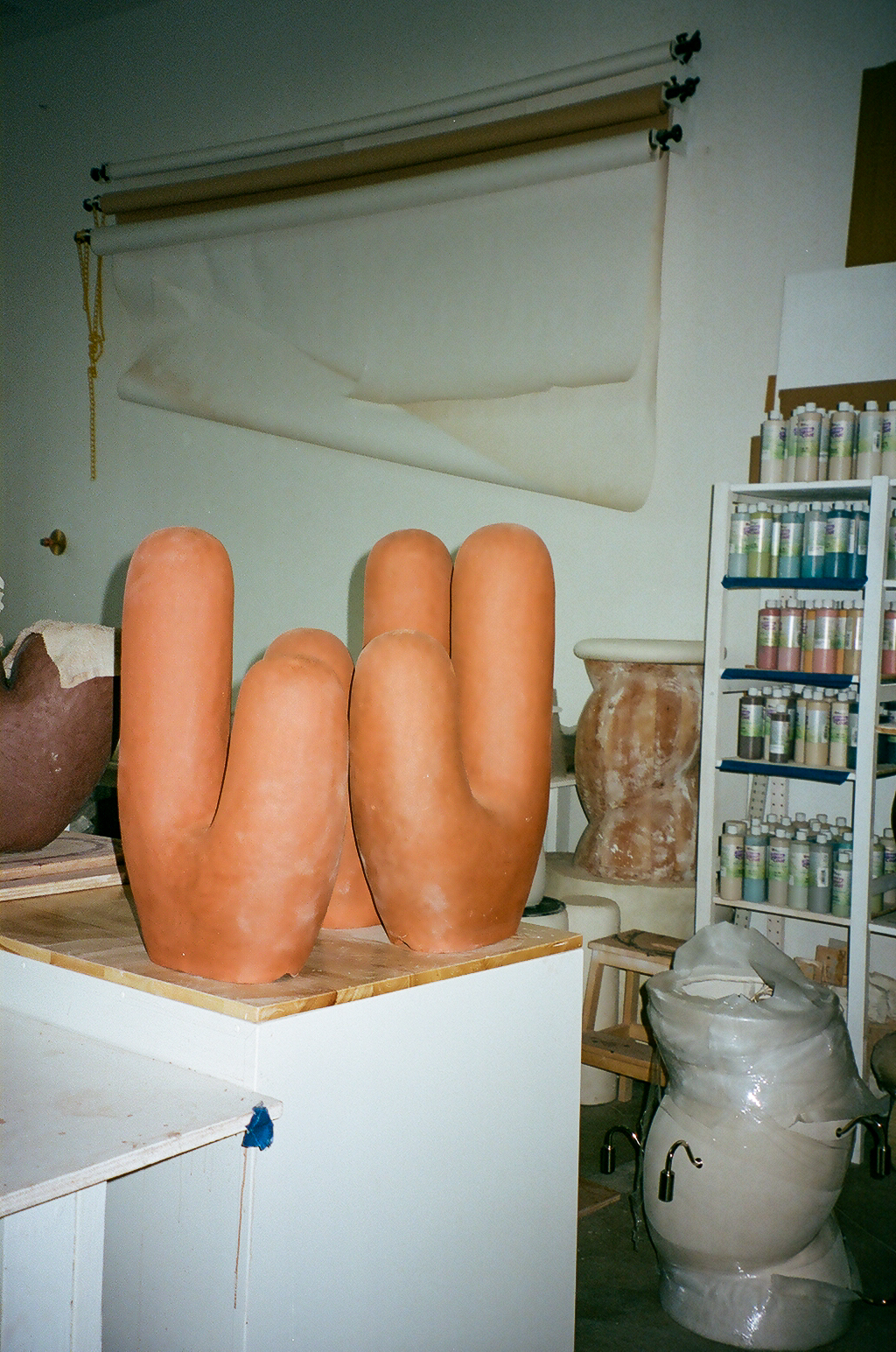
Do you have many friends that work in fashion and music? Do you get inspiration from things outside of design?
⎯⎯⎯ It’s funny actually because outside of furniture design a lot of my friends have such different interests than me! I have very basic interests like music, games, movies… all of it [laughs]! So design is something we all have in common. Sometimes it's hard for me to find other aspects to connect with people and even noticed there is an expectation for me to have really great taste in other aspects like music, movies, film, and books…
You certainly don’t have a basic taste in fashion from what I have seen!
⎯⎯⎯ My friends are good at dressing! I like to have fun with it, and I know it's something I don't need to excel in but enjoy. Some people get surprised at some of the music I listen to; for example, I'm a huge Selena Gomez fan.
It’s good and fun music.
⎯⎯⎯ I enjoy it! Life is already hard on its own, and this type of music is for entertainment. It's for fun. I already have a business, and I try to have fun with it, and I don't have to be the biggest film buff or music expert on top of it.
There is a lot of pressure in a creative career to showcase one’s taste. You're essentially saying, “trust me, trust my taste and believe in the things I make”.
⎯⎯⎯ That’s why I could never be a blogger or influencer because that encompasses everything from sharing your recipes, where you get your clothes, to what music you’re listening to and so on.
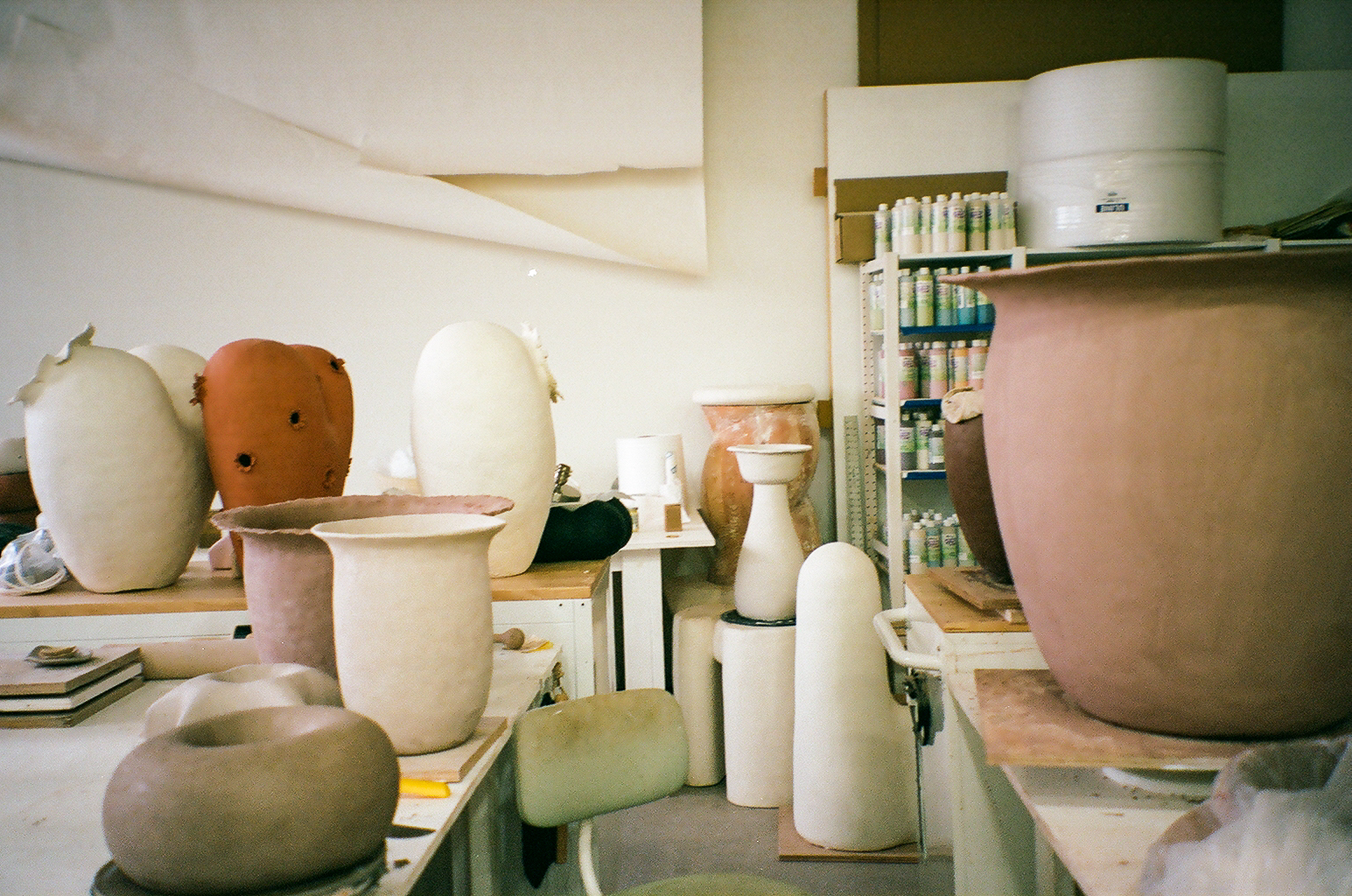
How did the studio come to be? What has been the journey these past few years?
⎯⎯⎯ When I was in school, doing my masters in furniture, Monica and Jill from Sight Unseen came across my work online. I consider Instagram to be like my millennial app, so that’s what I was using to post about my favourite furniture and projects. Monica and Jill saw it and must’ve thought I was the “real deal” because, in 2017, they invited me to do a show in New York, but I told them I was in Savannah and I couldn’t afford to participate… they found me a sponsor which was Levi’s, and that covered the expenses for my booth. I did the show while making all the furniture in school; I designed the whole booth and drove it up. They didn't know I was in school—well, in grad studies, so it's a little different—and I didn't know what trade shows were back then. I thought it was a fun thing to do! Then during the show, Alessandro Munge, who is Munge Studio in Toronto, came by because we had been emailing about a restaurant project he was working on. He visited to make sure I was a real person and a business!
What a great way to start!
⎯⎯⎯ That was my first real project. I did all the lighting and some sculptural vessels in the Toronto restaurant Madrina.
You were making everything yourself and by hand at that time. Was it challenging to balance your time working with your studies?
⎯⎯⎯ Luckily by then, I was only taking a few classes each quarter, so it was manageable. The restaurant project took about a year, and it paid for my kilns. Before completing the project, I moved to New York. When I arrived, I needed studio space to continue... I got those kilns and finished the project here. It was a good budget, and I could devote my time to that. Then I said fuck it. I'll figure out how to pay rent every month afterwards. Which, at the time, was $2,000. It's a lot for somebody just starting!
That is quite a commitment!
⎯⎯⎯ Yes, I had a studio in Savannah that I was renting out at about $ 300, so I went from that to New York prices very quickly. It was in Bushwick, and it was a good size. I also did ceramic jewelry, which paid my bills for a long time.
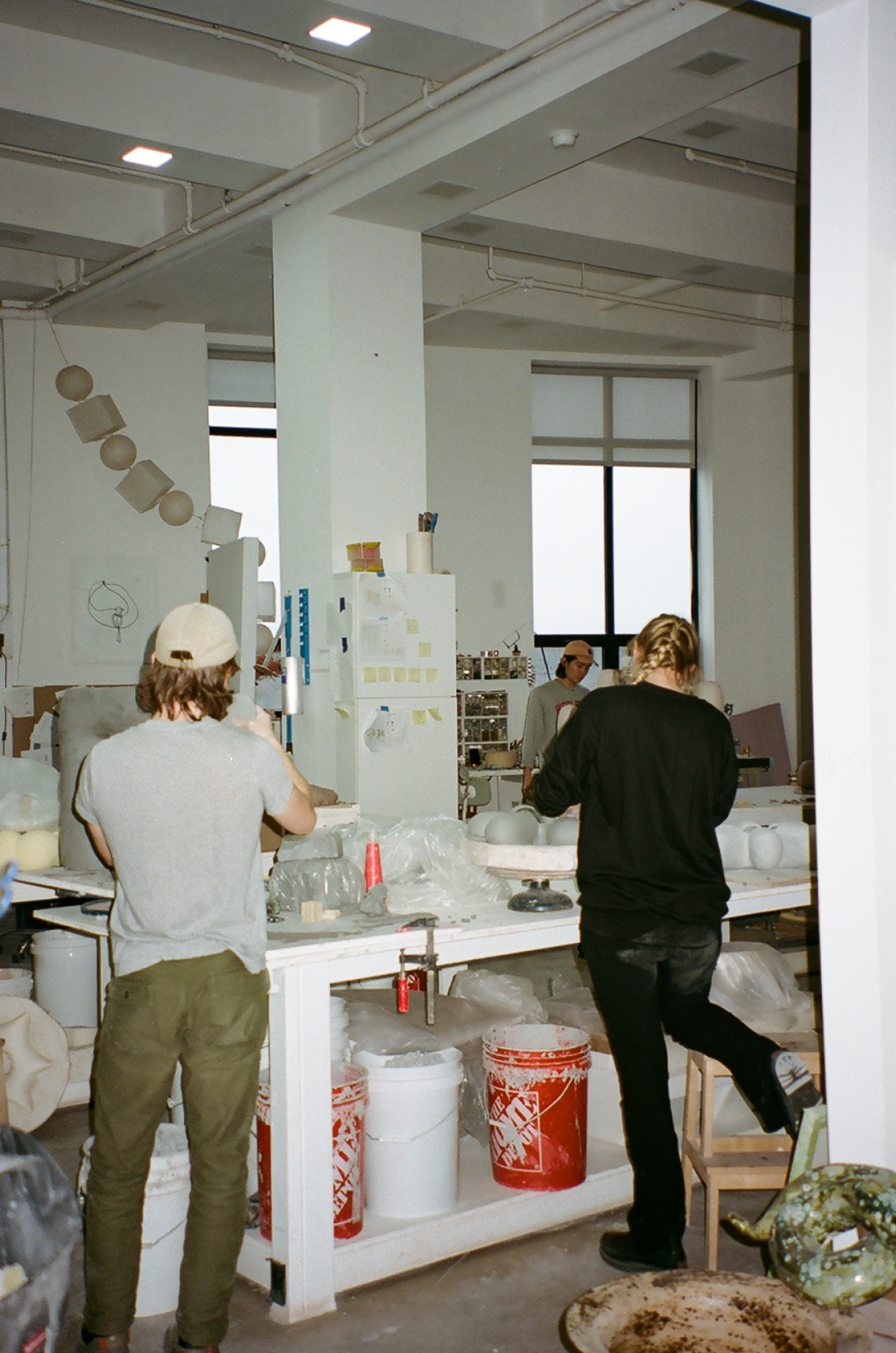
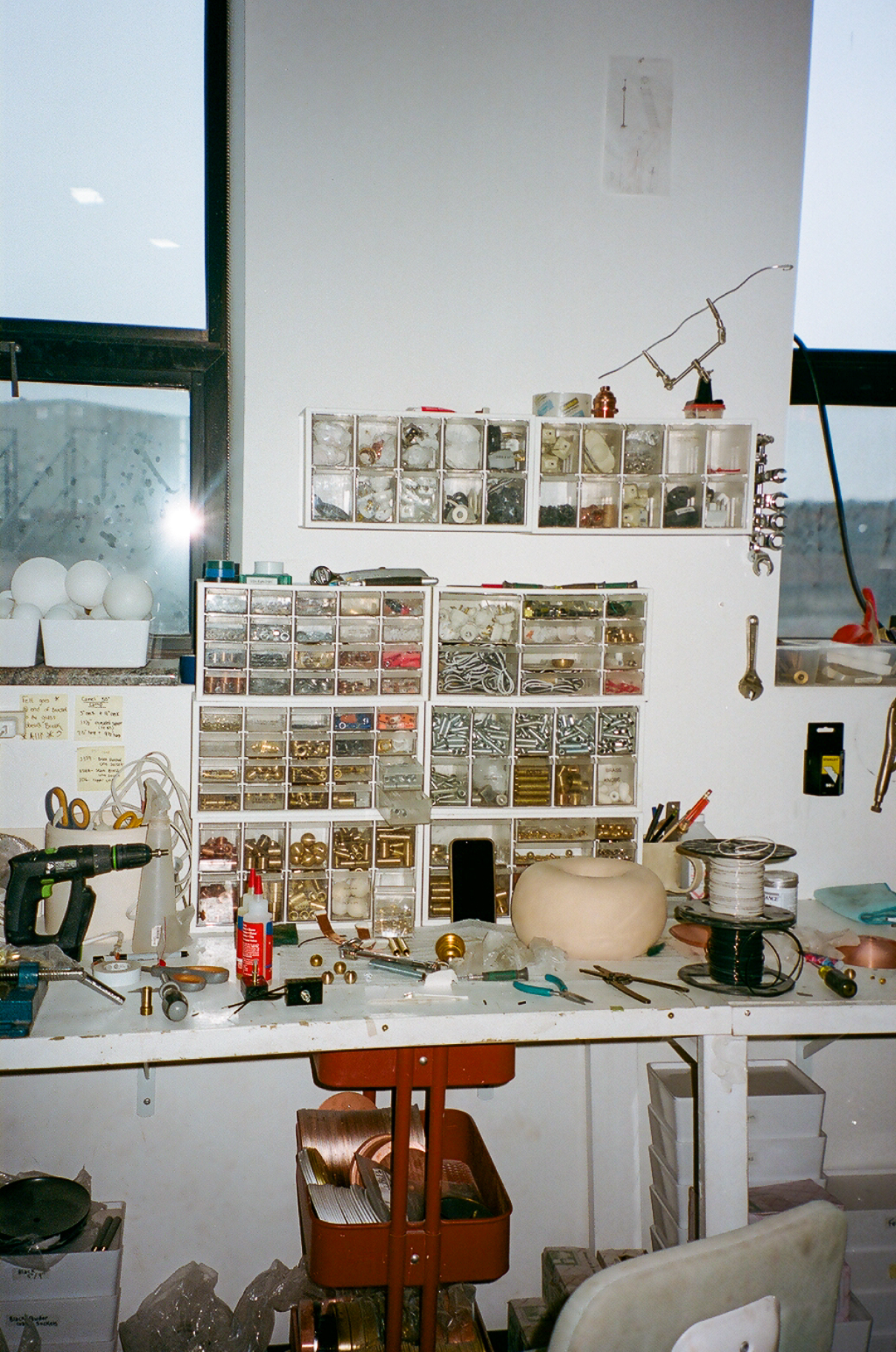
How were you selling the jewelry?
⎯⎯⎯ I was wholesaling it to small stores, selling direct. At the time, ceramic jewelry was not a thing. Same as in 2017, terracotta furniture was not typical, then it exploded in the colour story trend. I was using all the right colours! I didn’t mean to use millennial pink. I intended a more nude colour, along with dark green, terracotta, and velvet textures. It was the perfect mix of what was about to trend, so naturally, it exploded. In that way, I got lucky with the ceramic jewelry, too. I was trying to find something I could make with the equipment I had. I think some of the lighting I did back then was also correlated to the jewelry I was doing.
The connection is evident. What have you learned from making the jewelry that you use today in your business?
⎯⎯⎯ It was beneficial to learn how to create a collection, make line sheets, take product photos, do wholesale, reach out to stores, have people return items, process shipping, customer service... all of it! It was at a much more manageable scale because it was jewelry.
You can even store it in your own apartment!
⎯⎯⎯ Furniture is much larger and more difficult but it really helped me understand the process of it!
You never studied business or marketing in school, this has been all through experience?
⎯⎯⎯ And a lot of googling and asking around! Even today, we wing it a little bit. I think that doing more furniture when I showed at the ICFF fair, which is very commercial, we launched the “Oo Lamps” which sold the most and that exploded the business. It made it what it is today.
I see them everywhere, and I was shocked to learn they've been knocked off!
⎯⎯⎯ Yes, I'm trying to figure out how that affects our business. They're being sold on Etsy and all over Pinterest, so these knockoffs have very high visibility.
I wonder if most people would know to differentiate the two?
⎯⎯⎯ Well, I know those are plastic and much smaller in scale...
and not hand made by the studio...
⎯⎯⎯ That "Oo Lamp" hit a cord in the market of interior designers. It was a good price at the time of launch, and we began selling so many. To meet the demand, I had to raise the price. It was our bread and butter for a while because it brought in consistent orders. With things like that, I learned a lot more about packaging and shipping, which we now don't do ourselves, we work with a vendor.
What is this house project you’ve been working on?
⎯⎯⎯ It’s a house in Connecticut that we’re restoring. Soren from the studio is there working on it now. We plan to rent it out, run it like a business, and have it as a good investment. I bought it very cheap with my ex, and as soon as I got it back, I brought Soren into the project, who has equity. I could not tackle this on my own.
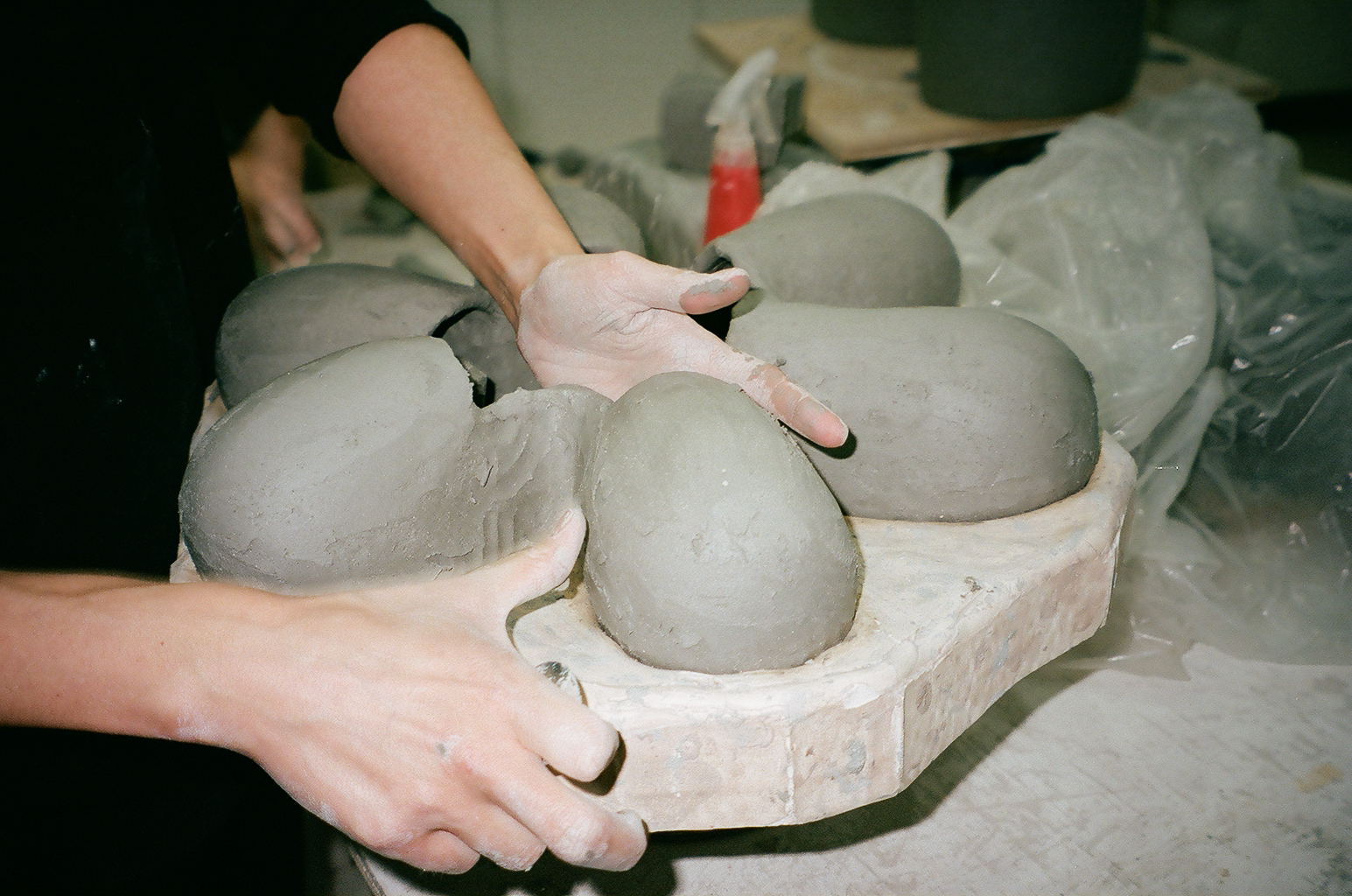
I saw a recent post on your Instagram of an antique window, and you asking Soren to install it sideways, and he’s like … "umm, no." [laughs]
⎯⎯⎯ Yeah, [laughs] he and his girlfriend came across it at an abandoned house and then worked on installing it. The stuff that he shows me on FaceTime on the daily I’m like how did you find that out? He’s basically a contractor now. He knows how to build a house.
You've gotta be resourceful... I don’t even know where to start with installing a window.
⎯⎯⎯ He installed so much, even the skylights. A good friend of his who is a contractor came out from Seattle to help for a month or two. Worked on all of the plumbing, electrical, and taught Soren a lot about renovations.
When he's done working on the house, he will have so much knowledge to use for another project!
⎯⎯⎯ Yeah, Soren is figuring out what he wants to do next but is heading in more of a holistic design route. It's really fun. We try and do a lot of custom pieces for it, like the tiles we're doing ourselves and, obviously, the lighting. Soren gets quite particular about the furniture built-ins that he wants to do. So it's going to be both of our design languages together.
It sounds like it will be quite beautiful.
⎯⎯⎯ Our goal is to keep it cozy and farmhouse!
That’s perfectly fitting for a house upstate!
⎯⎯⎯ It will be an old English house with weird contemporary furniture, which will be fun.
I think people will be drawn to that and want to rent it out.
⎯⎯⎯ Hopefully!

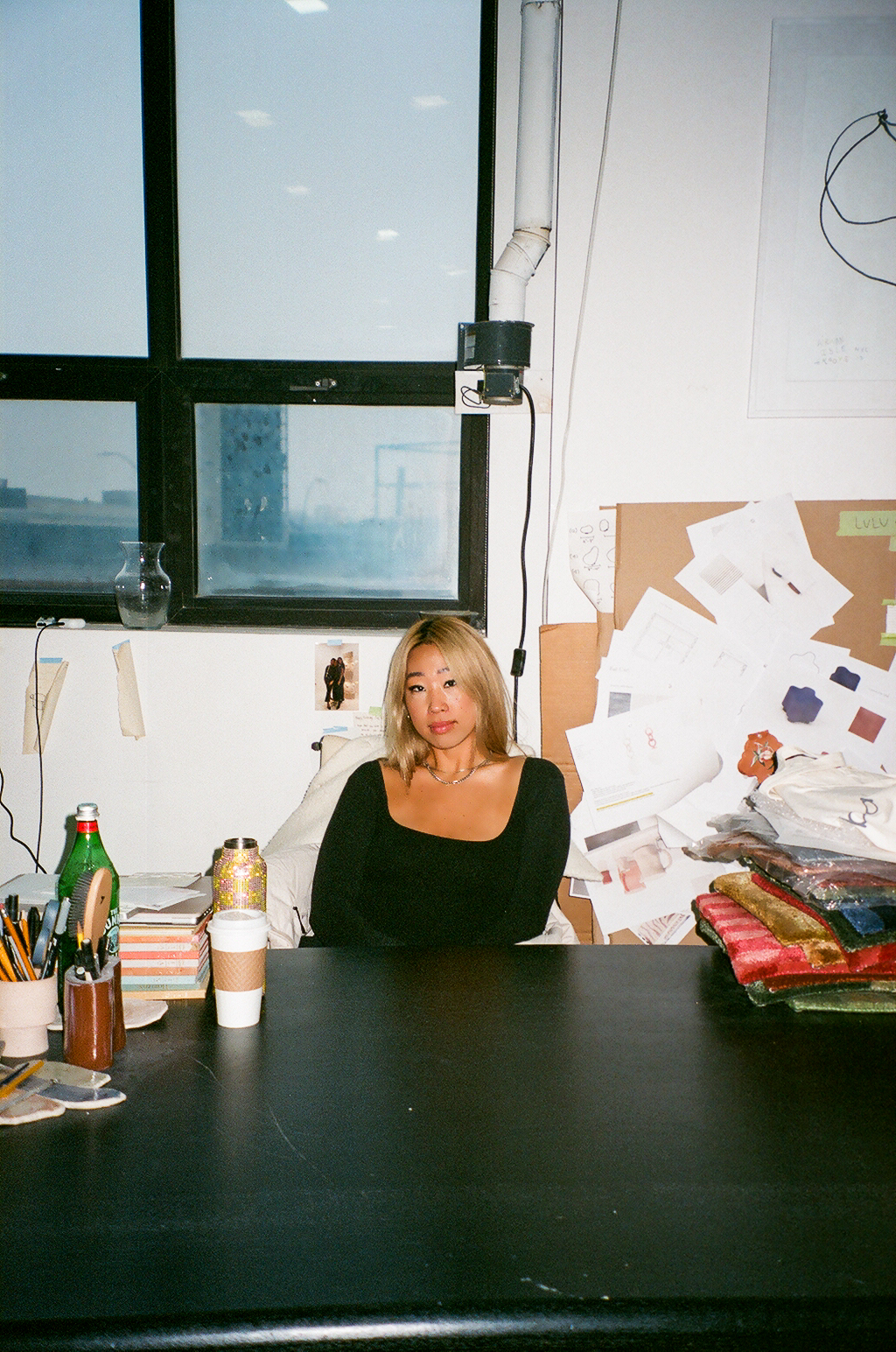
Another recent project is the exhibition you curated, can you tell us about that?
⎯⎯⎯ Yes, for Objective Gallery, my friends Chris and Mark founded it. What I like about my studio here is that it can benefit both the artist and the studio. It's a nice cushion. I always hope my team knows that if they need work, they can just come in, and there will be work. And if they need time off for their own practice, they can do so. I want them to grow and invest in their careers. I always tell them that if they find a better-suited opportunity, better pay, or if they need a recommendation letter, I am more than happy to support that! I've found in New York, it's difficult for artists, especially younger ones just coming in. Those trying to do their own thing and make it, it's pretty brutal. I don't feel the need or think it's necessary to be competitive or keep my team to myself. I want them to be happy and grow; if they're satisfied and the studio is good. Any environment is not great when somebody is miserable.
Absolutely, it affects the mood of everybody and eventually the work.
⎯⎯⎯ The benefit of running a small studio is that we can be more personal than a larger company. The way I view the studio is like a transitional space, it can be whatever you want as long as there is mutual respect toward each other, and I love supporting other artists. I bring that up because, for me, when curating a show, I've done so through that mindset: wanting to find different people to take on and do this for fun. Of course, the galleries must approve of the artists we bring in because of sales, etc. But our goal is to have a relief space for different artists. Somewhere they don't feel pressured to make something but have fun, make a party, and not take the topic too seriously.
And the topic was, “sexy.”
⎯⎯⎯ Yes, just that! The opening was such a blast and it was great to have a really good mix of people come in.
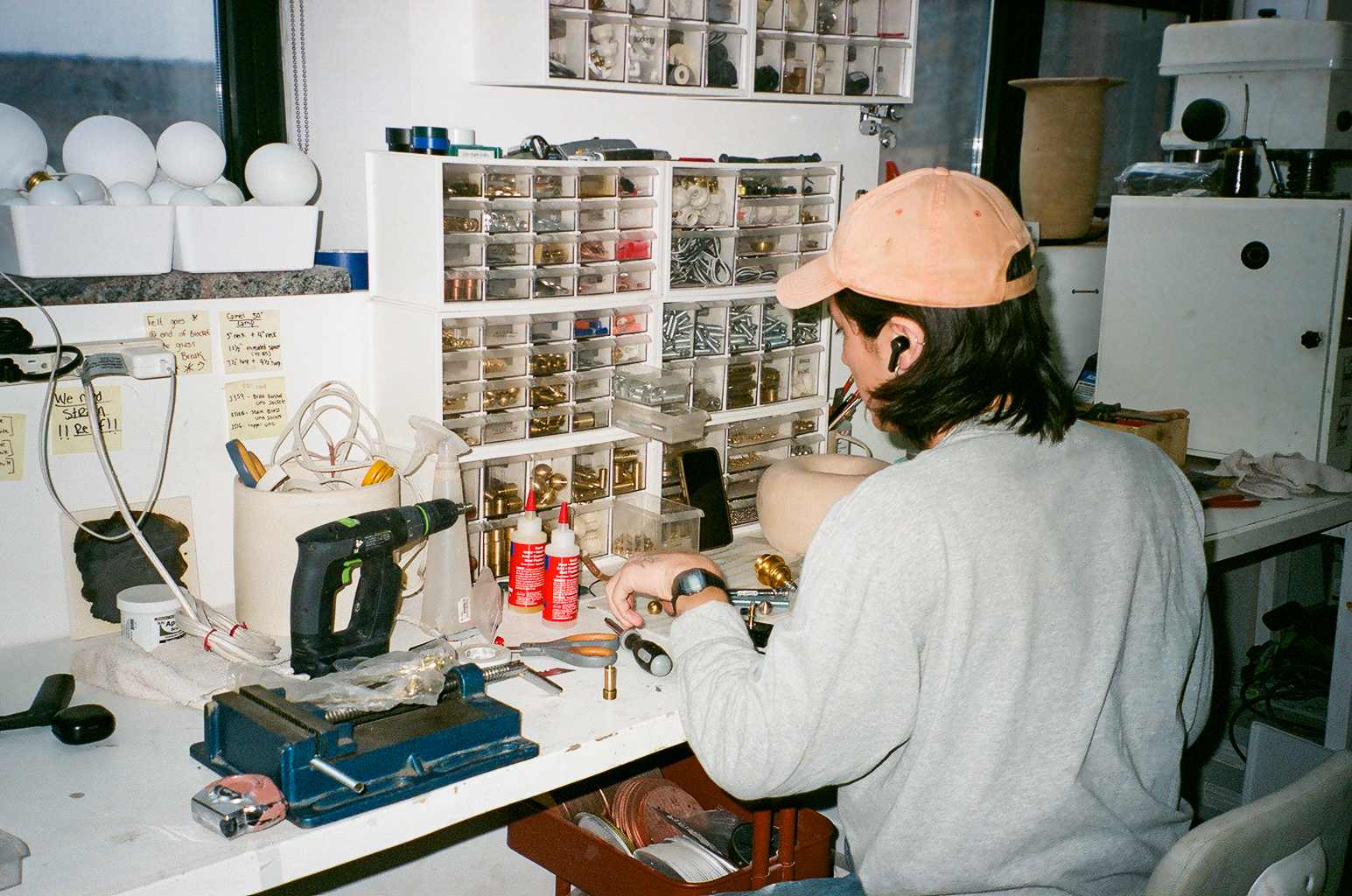
Were there any artists/designers that had never shown before that you were able to include in this exhibition?
⎯⎯⎯ I'm not sure if they've shown in the past, but for example, my friend Hilary, who did lighting with me, has a new clothing brand that was really fun to have. Also, the pressure cooker Dong made was amazing. His architecture firm Food New York has many different types of projects, like the crazy black resin pressure cooker with the koi fish around it. Another surprising food item was Chen & Kai's grill with the torso and big dick [laughs], and there they cooked hot dogs. It was really just a fun event, and I would love to do it again!
That does sound fun! So many shows today are too focused on sales, where the creative and fun energy is lost.
⎯⎯⎯ I think at times with group shows, there's too much similarity between the people and the furniture. I wanted to create something diverse instead and bring different fields together.
Are you planning more shows or was this a one-off?
⎯⎯⎯ I would do another show! I'm not a "real" curator, and I tend not to think so much about sales compared to a gallery. So that's a hard sell. That show had such a specific and perfect timing. They had recently opened the gallery and wanted to create some buzz, and I had friends who were down to do it. They have a beautiful large space in Tribeca with a corner window. We filled the entire space!
Another aspect of your practice is the work made outside of the studio. How do you decide if something is a studio piece or translate it into a production piece? Is this something you decide from ideation?
⎯⎯⎯ We just announced we are launching the collaboration with Lulu & Georgia, which will be coming out soon, with some furniture and tabletop items. It's a pretty big collection. I like working with a partner like them because licensing work is passive income, allowing me to dedicate time to other fun projects. It will enable me to offer a different price point than handmade works and reach a different market. I am also thinking about what are the things I can design that I would not be able to make, they have factories and a type of production I don't have access to with my studio, so I think about how I can use that and design based on materials like metal or wood. In the studio, it's items that are sculpted by hand. It's a different type of product and different customers.
What are you excited about this year?
⎯⎯⎯ The Lulu & Georgia collaboration, I'm in talk for a show with Hypebeast in the spring, and I just entered a project for NeoCon Chicago with Patricia Urquiola and Haworth! Those are the first six months of this year.
And hoping to complete the house this year!
– East Room is a shared workspace company providing design-forward office solutions, authentic programming and a diverse community to established companies and enterprising freelancers. We explore art, design, music, and entrepreneurship. Visit our news & stories page to read more.